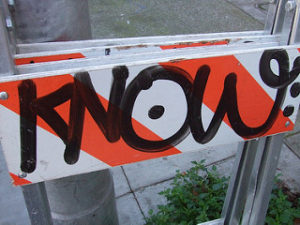 This is part of a series, introduced in Baby Steps, about arts organizations’ initial efforts in community engagement. For details about the premises upon which these posts are based, see below. The essence is that simple, inexpensive initial steps offer the best way to embark upon community engagement.
This is part of a series, introduced in Baby Steps, about arts organizations’ initial efforts in community engagement. For details about the premises upon which these posts are based, see below. The essence is that simple, inexpensive initial steps offer the best way to embark upon community engagement.
Know Your Communities: Community-Aware Marketing
This is a sneaky post. The emphasis of this series is on the small, simple, inexpensive things that can be done to pursue community engagement in the early days of such efforts. That would be true of what follows if our industry’s marketing were grounded in audience awareness. Unfortunately, it is not. It has, historically, been self-focused, self-referential, and what I love to call artcentric. So, while what’s needed demands, for many organizations, a seismic shift, that is not the fault of community engagement. It’s the fault of our marketing history and practices.
Engaged Promotion
What’s necessary is simple–organize marketing efforts around the interests of the people you’re trying to reach; and to do this, you need to understand them; and to do that, you need to talk with (not at) them. (OK, if you feel the need to keep a distance, survey them; but make sure it’s a well constructed survey and respond to what they say.) Once you know about the people you want to reach, construct your messages in such a way that they might pay attention. Why should they spend their time and money on what you have to offer?
Relationship-Based Marketing
Phase II of engaged marketing is rooted in the relationships you have with the people you are trying to reach. (This is why the “survey only” can only take you so far. Surveys don’t build relationships.) When communities trust and value an organization they will pay more attention to communication from it. And, of course, the communication will be far better targeted so that it will be more effective.
How To
Granted, the practicalities of this go far beyond the scope of this blog post. So, I’m calling upon a couple of experts (and providing links) for readers to follow.
Last August, Aubrey Bergauer, Executive Director of the California Symphony, published four articles that explained how the CS had, in three years, reversed the national trend in orchestral audiences by increasing ticket revenue (by 71%), audience size (by 70%), new subscriber renewal rates (by 69%), and a host of other indicators by changing the way they did their marketing. Her concern is with what is called audience development, but the principles easily apply to community engagement. In essence, she advocates focus on “patron retention,” a concept that sounds a whole lot like relationship building (aka engagement) to me.
Here are the links to her overview and subsequent implementation articles:
- Overview: Audience Development: The Long Haul Model
- Implementation
I present these because they are so thorough and totally worth the time of anyone who is interested in effective arts marketing.
While I would normally have begun with my “go to” marketing guru, blogging buddy Trevor O’Donnell, let me point you to a recent and particularly pithy post of his dealing with the creation of marketing materials: https://trevorodonnell.com/2018/01/25/want-good-copy-say-it-then-write-it/. The essence of his suggested remedy for over-the-top arts marketing prose is, once again, “talk to people.” The real world feedback can be bracing and almost always incredibly helpful.
Both of these sets of principles, if applied, would make their application to community engagement a completely seamless transition, one that would require virtually no extra work for the organization except perhaps talking to more people. The fact that this is not the case is, as I said before, not the fault of community engagement.
Yes, truly effective marketing may necessitate major change. However, the required change is something that needs to be done regardless of whether you’re interested in community engagement. The simple economics of soaring costs and the most basic principles of marketing demand it. So, if this change is essential, why don’t you maximize your return and develop relationships with new communities while you’re at it? You know . . .
Engage!
Doug
Photo: ![]()
![]()
![]() Some rights reserved by caffeina
Some rights reserved by caffeina
The premises of this blog series are twofold. First, since relationship building is the core of community engagement, attempting to do too much too fast (before the relationship is established) will likely not be productive and, in fact, may be counter-productive. Second, there are many things that can be done to support engagement that do not require new personnel or new budgets. Simply re-imagining (and perhaps slightly re-tooling) things that are already being done can support engagement in very effective ways.
It should go without saying that the core of all engagement work is a strong (even if not unanimous) desire on the part of the organization to make connections with new communities. If the will to do so is lacking, the work will be at best minimally successful.

[…] Know Your Communities This is a sneaky post. The emphasis of this series is on the small, simple, inexpensive things that can be done to pursue community engagement in the early days of such efforts. That would be true of what follows if our industry's marketing were grounded in audience awareness. Unfortunately, it is not. … read more AJBlog: Engaging Matters Published 2018-02-13 […]